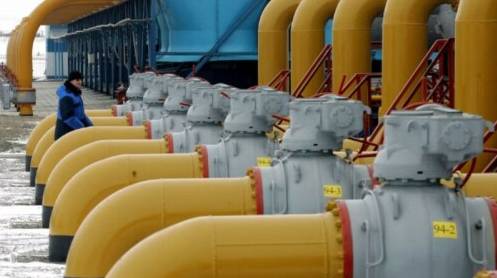Pakistan’s performance in critical Sustainable Development Goals (SDGs) sectors including education, water and sanitation lags that of its emerging market peers and achieving its SDGs by 2030 would require nine percent of the GDP in additional financing each year, says the International Monetary Fund (IMF).
The IMF in its latest report, “A Post-Pandemic Assessment of the Sustainable Development Goals” stated that public spending has been insufficient to meet the needs of a fast-growing young population.
“Without additional resources to offset the costs of the pandemic (on top of the substantial additional pre-Covid funding needs), achievement of the SDGs will be delayed by one year for Cambodia and four to six years for Rwanda, Pakistan, and Nigeria. There could be an even greater delay if the pandemic persists longer than expected,” it added.
While Pakistan has made some progress on development amid “volatile” economic performance and fast population growth, its performance in critical SDG sectors lags that of its emerging market peers.
In the areas of education, water, and sanitation it is below the low-income developing countries (LIDCs) average.
The Fund has stated that Pakistan achieved mixed economic and social development results over the past two decades.
Short episodes of fast growth were soon followed by downturns, on the back of unbalanced policies and unfinished reforms, together with a challenging geopolitical and security situation.
Despite a notable reduction in poverty, Pakistan’s current performance in critical SDG sectors lags that of its peers. Achieving its SDGs by 2030 would require nine percent of the GDP in additional financing each year.
The impact of the Covid-19 crisis is severe, and the recovery is expected to be subdued.
As a result of containment and mitigation measures and the global fallout from the pandemic, real GDP is estimated to have contracted by 0.4 percent in fiscal year 2020 (July 1, 2019–June 30, 2020).
While the authorities’ actions have supported an incipient recovery, economic growth is expected to return to its pre-pandemic rate of 4½–5 percent only in the medium term.
As a result, the country faces a permanent loss of almost six percent of output, and fiscal space available to finance the SDGs has shrunk.
Pakistan needs to pursue comprehensive reforms to generate the resources to fund its development ambitions.
Given the magnitude of the existing challenges, even wide-ranging reforms will not be sufficient to completely close the gap.
Still, the reforms will notably reduce the resource gap and have a positive impact on development.
The report stated, “The authorities should focus on the following reforms: Further revenue mobilization efforts: Following the authorities’ commitment to important reforms in this area, our baseline scenario includes an increase in tax revenues of 3 percent of GDP during 2020– 23. Still, there is room for additional improvement beyond 2023 by ensuring full harmonization of sales tax across federal and provincial levels, further broadening of the tax base to include the agricultural sector, expanding the services tax base, and strengthening the property tax system. We assume the authorities are able to generate additional tax revenue of 2 percent of GDP during 2024–26. Reforming the energy sector and inefficient state-owned enterprises (SOEs): A comprehensive reform to address structural weakness in these areas should include the introduction of an energy pricing structure reflective of costs, improved efficiency, enhanced transparency, and a legal framework for governance of SOEs. A triage exercise for all SOEs should determine their viability and may lead to privatization of some enterprises. We estimate that these policies can free up 1¼ percent of GDP in resources for development. Attracting private investment: Improving the business environment, which suffers from weak governance and institutions and stifling regulation, is crucial to attract private investment to stimulate growth and ensure SDG financing. Foreign investment in Pakistan is low. Bringing it in line with peers’ median would result in an additional 3.4 percent of GDP in private investment for development. These reforms could generate enough resources to finance some 57 percent of Pakistan’s SDG needs and significantly boost per capita income. However, even with these reforms, the country would still need to find 3.9 percent of GDP in additional resources in order to meet its SDG targets by 2030,” it added.
The Covid-19 crisis caused recessions in Nigeria, Pakistan, and Cambodia.
LIDCs and emerging market economies have been able to provide only a fraction of the support in advanced economies in the form of mitigating measures, in part because of limited fiscal space.
Hence even though all four countries experienced large declines in tax (and in the case of Nigeria oil) revenue, 2020 deficits are expected to have increased by a relatively modest 1¾ percentage points of GDP on average compared with pre-pandemic projections.
“We estimate that, after the pandemic, even under assumptions of a relatively quick economic recovery—during which the four countries return to their pre-crisis growth path in five years—average additional (public and private) spending of just over 14 percent of the GDP is needed every year between now and 2030 to achieve the selected SDGs. These estimates range from 8 and 9 percent of GDP in Cambodia and Pakistan, respectively, where the main spending shortfalls are in health and education, to 21¼ percent of GDP in Rwanda, which mainly needs to build its physical infrastructure. In case the recovery takes longer due to economic scarring, even more resources will be needed. Without these additional resources, these four countries will meet their SDG goals much later than the target year of 2030,” the report noted.
“The Pakistani authorities have started to implement tax policy and revenue administration reforms that could help raise the tax revenue ratio by more than three percentage points of GDP over four years. In Nigeria and Pakistan the efficiency of physical infrastructure investment is relatively low, whereas Cambodia and Rwanda perform in line with their peers.
“Consider Pakistan and Nigeria, which saw FDI inflows of just 0.7 and 0.5 percent of GDP a year during 2015–19, respectively—both well below the average of their peers. Rwanda, which attracts more FDI and aims to increase it further, could strive to raise FDI to emulate the top quartile of its peers.
“We estimate that such comprehensive reform plans could on average generate about 40 percent of the resources needed to achieve the selected SDGs in our four case study countries and cover half the need in Pakistan and Cambodia. Still, to reach their SDGs by 2030, the countries would need to find additional resources amounting to almost 8½ percent of GDP a year, even with these ambitious reform agendas.”
“Country-specific conditions heavily influence the yield of reforms. Both Rwanda and Nigeria have much higher SDG needs than Pakistan and Cambodia. Hence similar reforms can be expected to pay for a smaller portion of their SDG needs. At the same time, Rwanda and Cambodia have a good track record of reform in recent years, while Pakistan and Nigeria have pursued less reform. Therefore, while harder to achieve, the scope for reforms and their potential gains are larger in the latter two countries. For instance, while tax revenue represents 15–18 percent of GDP in Rwanda and Cambodia, Nigeria and Pakistan are projected to have collected only 3 and 11 percent, respectively, of GDP in tax revenue in 2020. Comprehensive reforms of the tax system hence imply greater potential gains in Nigeria and Pakistan.
“Considering their larger SDG needs, it would take Rwanda and Nigeria until 2040 and 2043, respectively, while the reform policies—on top of current reform plans under its IMF-supported program—would enable Pakistan to meet its SDG targets by 2045. The impact on individual countries depends on how this amount is distributed across countries.
“Combining the domestic reforms outlined above with additional support distributed to LIDCs in accordance with recent aid flows would allow Cambodia and Rwanda to (largely) fill their remaining financing gaps and meet their SDG agendas in the five sectors considered in this note by 2030 and 2031, respectively.
“In this scenario Nigeria and Pakistan would receive less support, and—while the funds would help both countries—it would still take them at least a decade longer to achieve their SDG goals. Distributing the support based on countries’ GDP would allow Pakistan to meet its SDG agenda by 2030, while Nigeria—which has much larger initial needs—would be able to meet its SDG goals by the middle of the next decade,” it concluded.





